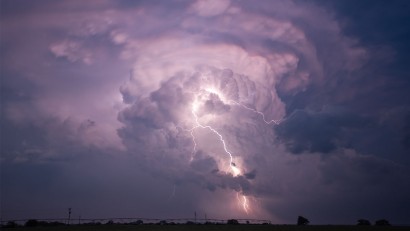- 1. Best for Deep Snow | Snow Cave
- 1.1. How to Build a Snow Cave
- 2. Best for Moderate Snow | Quinzhee (Similar to an Igloo)
- 2.1. How to Build a Quinzhee
- 3. Best for Quick Shelter | Tree Well
- 3.1. How to Build a Tree Well
- 4. Best for One-Directional Wind | Lean-To
- 4.1. How to Build a Lean-To
- 5. Best for Having a Fire | Wikiup
- 5.1. How to Build a Wickiup
- 6. Best for Desert Landscapes | Trench
- 7. Stay Safe
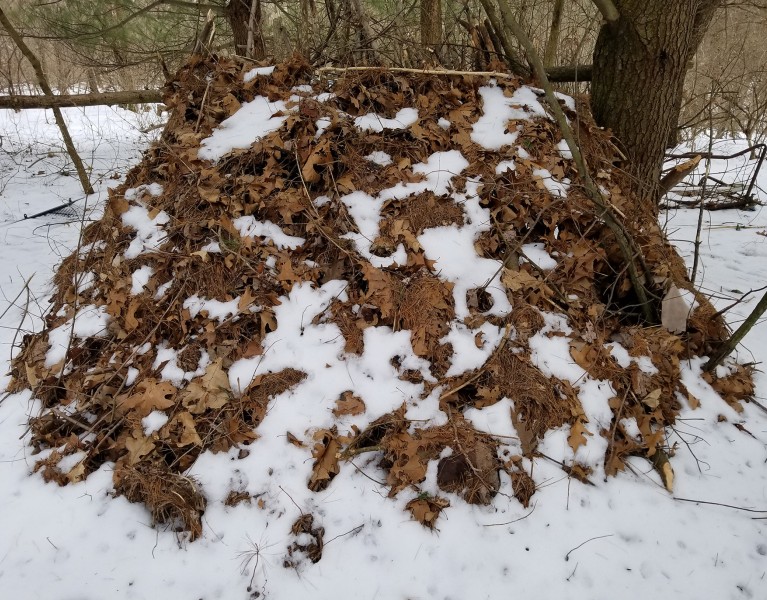
How to Build a Winter Survival Shelter
Table of Contents [Show]
Learning to survive in nature with minimal gear is a serious endeavor and essential knowledge for any true wilderness explorer. A survival shelter traps heat and protects you from the elements. Shelter from wind, rain and snow also enables you to start a fire or cook.
For some, learning to build a survival shelter is a hobby sparked by curiosity, while others are preparing for an adventure through undeveloped territory. Either way, knowing how to build a shelter is a valuable skill when venturing into remote locations or in an unexpected emergency situation.
What type of shelter you build is dependent on the weather and conditions. For example, in a heavy snowstorm, you'll likely have minimal access to wood and need to use snow as your primary shelter material. Depending on the snow texture, some shelters are safer than others. If your ceiling were to collapse, heavy snow can be very dangerous and even life-threatening. That’s why you need to learn proper techniques.
Building a shelter can save your life in extreme circumstances, so let’s discuss six of the best shelters to learn to make.
Please note; This is a brief overview of each shelter and does not replace proper training. If you are heading into the wilderness, you’ll need to consult a wilderness professional to ensure you have the right skill set to keep you safe.
Best for Deep Snow | Snow Cave
If you're surrounded by deep snow, your options for shelter are limited. Unfortunately, snow caves can be dangerous if not built properly. However, if you're in a tough situation and need shelter, a snow cave may be your best bet.
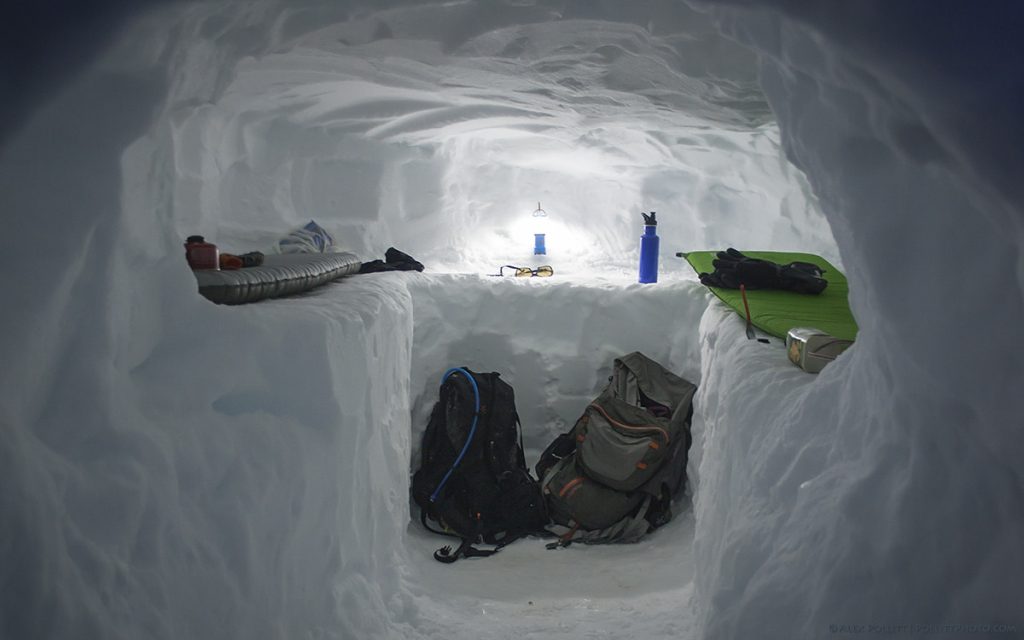
How to Build a Snow Cave
- To maximize stability, find a deep, solid snowbank and start digging from the side.
- Create a downward tunnel that includes a platform on the side for sleeping.
- Build your sleeping platform at the highest point of the tunnel.
- Next, dig a small hole in the roof for ventilation.
- Optional: block entrance with a backpack to trap in extra heat.
Best for Moderate Snow | Quinzhee (Similar to an Igloo)
A quinzhee is similar to an igloo in its shape, but it’s much easier to build. You can use a variety of snow textures to build a quinzhee, making it versatile for many different situations.
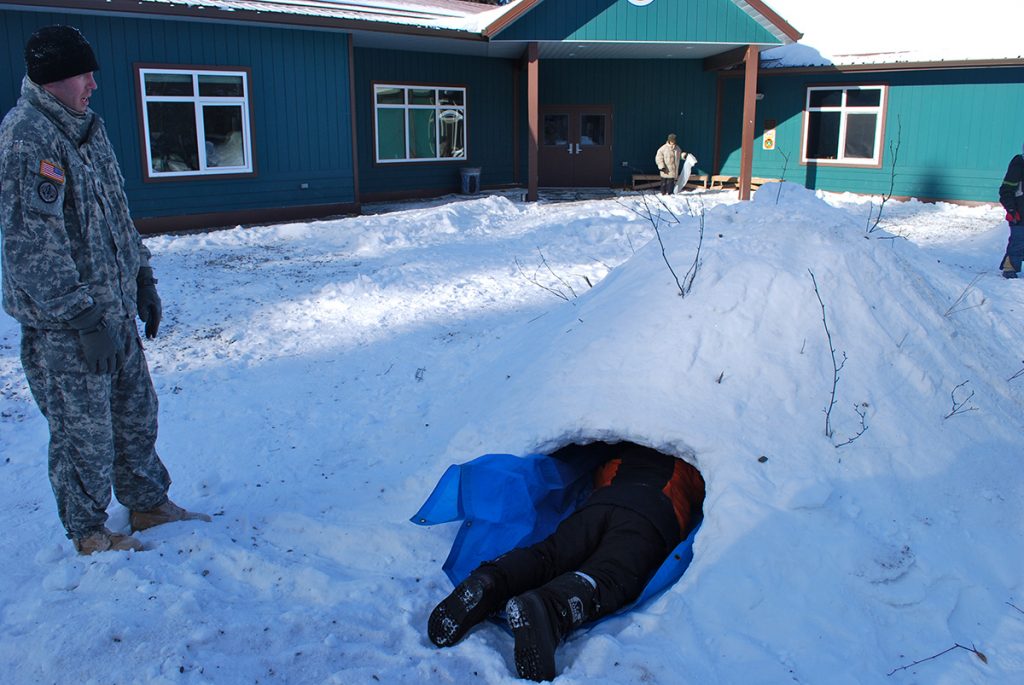
How to Build a Quinzhee
- First, collect all of your snow gear under a tarp.
- Pile snow on top, at least two feet thick, and pack it down as much as possible.
- Find 10+ branches that are at least a foot long. Place these sticks into the dome to create a frame for added support. Make sure each stick is placed to a similar depth, about 12 to 18 inches deep into your packed snow.
- Create an entrance and remove your gear, creating a hole under the quinzhee.
- Once inside, scrape out the inside of your roof until you hit each stick you’ve placed into your dome.
- Make a ventilation hole at the top of your dome.
Best for Quick Shelter | Tree Well
This winter survival shelter can work well in many different temperatures and conditions as long as there are trees around. In snowy conditions, a tree well is a great option because there the snow collects on the branches creating a lower density of snow around the base of the tree.
How to Build a Tree Well
- Dig as best you can at the base of the tree.
- If possible, push the dirt, snow, or mud into a wall to protect you from wind.
- Collect nearby branches and assemble them to create a wall.
- Burrow beneath the wall and branches for extra warmth.
Best for One-Directional Wind | Lean-To
A lean-to is a faster shelter to build and provides plenty of protection from sun and wind. You can also build this in minimal snow, but keep in mind that this shelter does not provide a ton of insulation. That’s because one side of the shelter will be completely exposed to the elements. To build a lean-to, you’ll need logs or thick branches varying in length.
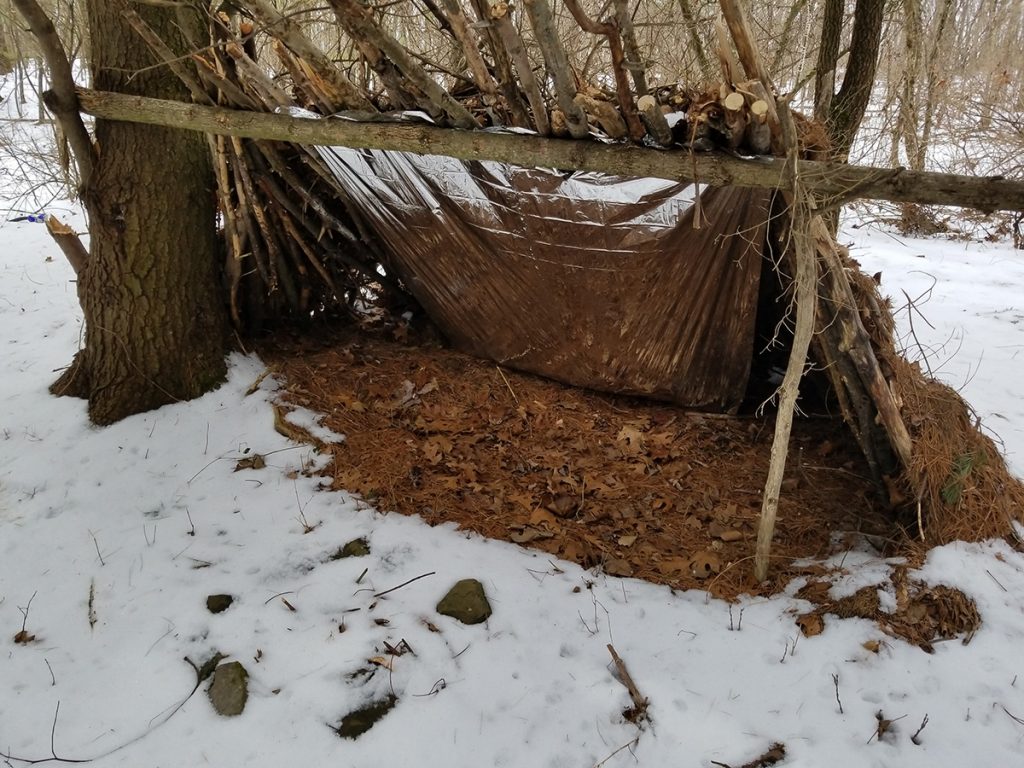
How to Build a Lean-To
- Locate an area with two trees relatively close to each other.
- Find a log that is slightly longer than the distance of the two standing trees, and secure it a few feet up each tree with flexible branches or rope.
- Find at least a dozen logs or branches to lean on the horizontal log to create the wall.
- Cover the wall with brush, grasses, leaves, and branches.
Note When deciding which direction to build your wall, consider the direction of the wind and the sun’s position throughout the majority of the day.
Best for Having a Fire | Wikiup
A wickiup is similar to a tipi in shape. If large enough, you can build a fire at the entrance of your shelter. That’s because the circular construction of the wickiup protects against wind and rain from three sides, while the opening quarter of the shelter allows for smoke to exit. Of course, if you decide to have a fire, make sure your structure is tall enough, so the flame will not catch on the wikiup.
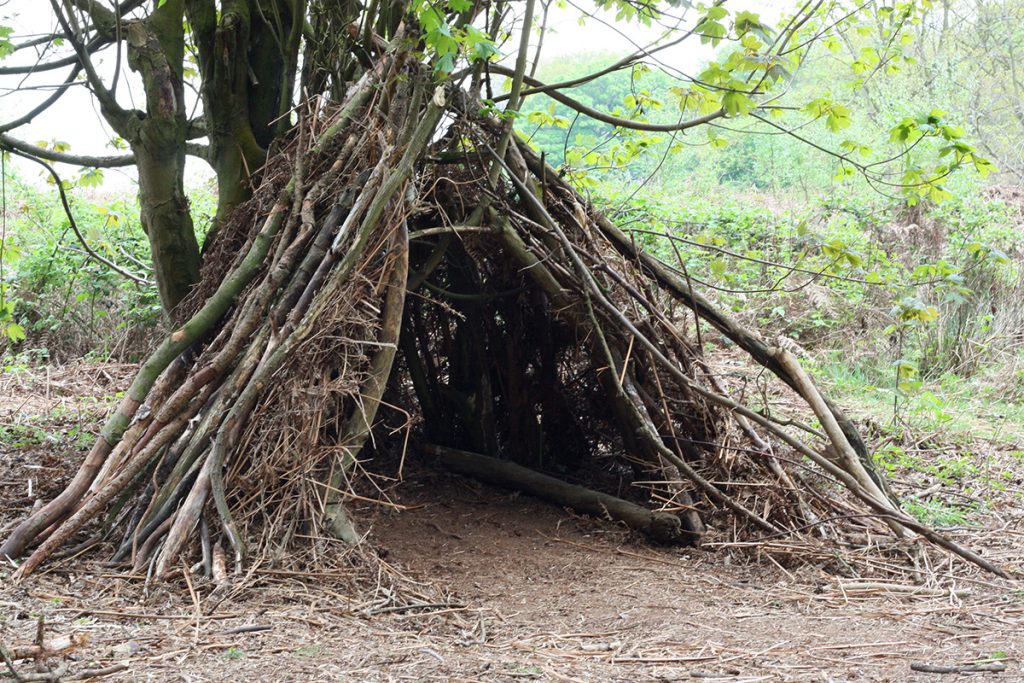
How to Build a Wickiup
- The shape of the wickiup is essentially a cone, so arrange long poles or logs in a circle at a slant, so they meet in the center above you.
- Secure logs or poles with rope at the apex of the wickiup.
- Make sure the tripod frame is sturdy by digging into the ground, or using rocks to secure the lower half.
- Once your frame is set up, assembles your walls by covering the outside with branches and vegetation.
Best for Desert Landscapes | Trench
The desert can be a barren place, with limited materials. Depending on the season, you may experience scorching heat, freezing night temperatures, or both. If you're stuck in the desert with no shelter, find a natural low spot between rocks to build a trench.
Note: This type of winter survival shelter can also work at beaches or other sandy environments.
- Survey the surrounding area and identify the best spot to build your trench. Ideally, it will be the lowest, most protected spot you can find.
- Pile sand around you to form a trench. Make it as deep as you can, preferably at least a few feet deep. You want to be able to fully sit in your trench to protect yourself from the sun.
- If you have a tarp, use a stick to prop it up and cover your trench.
- Do your best to find leaves or rocks that you can pile on foradded protection. If you have a tarp, use it as a layering material to reduce the temperature of your trench.
Pro Tip: Add a bough bed
If you are in very cold or freezing temperatures, build a bough bed to elevate you from the ground. Collect branches, brush, and whatever else vegetation you can find. If you can find them, use logs or thick branches to create a frame in the shape of a bed. Start with smaller leaves on the ground, and then layer the longer branches on top. Finally, top with more vegetation.
Stay Safe
Surviving in the elements with minimal tools is no easy feat. Do not attempt to venture into the wilderness without shelter unless you have professional skills and knowledge.
Building a survival shelter is an exciting skill to learn, but practice is essential before testing your skills in the wilderness. Practice building a winter survival shelter when camping with your gear first, or take a local class that focuses on wilderness training. Research the terrain of the area you will be in, and make sure to bring the essentials, such as water, ropes, flashlight, and pocket knife..
When venturing into the wilderness, ALWAYS tell a friend where you are going and when you plan to come back. That way, they can alert authorities if your return is delayed.
There are so many amazing places to explore, whether you bring camping gear or not. Planning to backpack? Check out our article, Backpacking Checklist: Gear and Tips.
If you live on the east coast, check out 10 Remarkable National Parks on the East Coast.
Wherever you go, make sure to tag us on your adventures @kuhl, and follow us for awesome, outdoor inspiration.
We love having you as part of the KÜHL community, so cheers to waking up in the wilderness and sleeping under the stars.
Stay safe!
Featured Image - Survival shelter in the snow by Paul Simpson.


